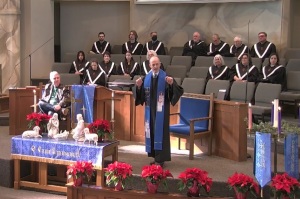Nearly Half of Americans Receiving Gov't Benefits
The bleak economy appears to be driving an increase in the number of Americans receiving some kind of government benefit to support their families or simply to survive.
Nearly half of the American population receives some kind of government perk or benefit, according to new Census data.
That's even higher than the figure reported during the Great Recession when government benefits reached, what most financial analysts said, the highest they would ever see.
Financial experts say the number of households receiving government help is at an all-time high because recovery is slow, the size of government has grown and because we are still in a recession.
Analysts have flashed the warning lights about Americans’ growing dependence on government payments and programs for some time now.
Breaking it down, data shows there are about 34 percent of Americans receiving food stamps, welfare or Medicaid. About 14.5 percent of the U.S. is living in a residence where someone is receiving Medicare benefits and a little more than 15 percent of American household are on Social Security.
A whopping 46.4 percent of U.S. households will not pay federal income tax this year, according to the Tax Policy Center.
The number of Americans taking help from the government and not paying anything back includes a large number of former middle-income families, who are either now out of work or experiencing financial troubles.
William Beach, director of The Heritage Foundation's Center for Data Analysis, and Patrick Tyrrell, research coordinator for the Heritage Foundation, say “Americans have always expressed concern about becoming dependent on government, even while understanding that life’s challenges cause most people, at one time or another, to depend on aid from someone else.”
The problem with the growing dependence on government is that it erodes the spirit of self-reliance and self-improvement in America, according to The Heritage Foundation report.
The Census Bureau released its annual poverty report, which declared that a record 46.2 million persons, or roughly one in seven Americans, were poor in 2010.
The numbers were up sharply from the previous year’s total of 43.6 million.
In most years for the past two decades, the Census Bureau has declared that at least 35 million Americans lived in poverty.
“At its root, poverty is usually more complex than a simple lack of material resources,” reports The Heritage Foundation.
“In America, poverty is often the result of a relational problem, such as fatherlessness or community breakdown. People have many needs that extend beyond simple material possessions-needs that cannot be met by any single institution.”
The foundation says instead of relying on the government so much, families, churches, businesses, and other forms of association play crucial roles in sustaining liberty and meeting people’s needs.
Religious leaders need to focus on the fact that when families fall apart, individual and social problems tend to escalate, according to the foundation. The breakdown of marriage and family is a major predictor of poverty in America.
"Effective poverty-fighting initiatives begins at ground level with churches focusing on families, close friendships, and mentoring relationships," according to another report from The Heritage Foundation.
"People often receive the most effective care from those who know and interact with them regularly. Relationships among friends and family members allow people to know each other’s circumstances. This kind of personal knowledge is necessary for tailoring solutions to particular needs. These face-to-face relationships form the foundation of a healthy and prosperous society."
William Beach, director of The Heritage Foundation's Center for Data Analysis, says like families, local congregations are well equipped to cultivate and restore the foundational relationships of life. Churches and ministries provide personalized help. They can connect those in need with others who understand the problem, can offer innovative solutions, and can observe the direct effects of their efforts.
"If they find that their approaches are not effective, local ministries can quickly change course and use different approaches as necessary," Beach said.
The Foundation concludes that local congregations can address a wide range of emotional, spiritual, social, material, and financial needs. Beyond providing just money or food, they can offer accountability, discipline, modeling, and a sense of belonging in a supportive community.
Did you know? There is now a new definition of "poor" in America.
The following are facts about persons defined as “poor” by the Census Bureau as taken from various government reports:
• 80 percent of poor households have air conditioning. In 1970, only 36 percent of the entire U.S. population enjoyed air conditioning.
• 92 percent of poor households have a microwave.
• Nearly three-fourths have a car or truck, and 31 percent have two or more cars or trucks.
• Nearly two-thirds have cable or satellite TV.
• Two-thirds have at least one DVD player, and 70 percent have a VCR.
• Half have a personal computer, and one in seven have two or more computers.
• More than half of poor families with children have a video game system, such as an Xbox or PlayStation.
• 43 percent have Internet access.
• One-third has a wide-screen plasma or LCD TV.
• One-fourth has a digital video recorder system, such as a TiVo.




























